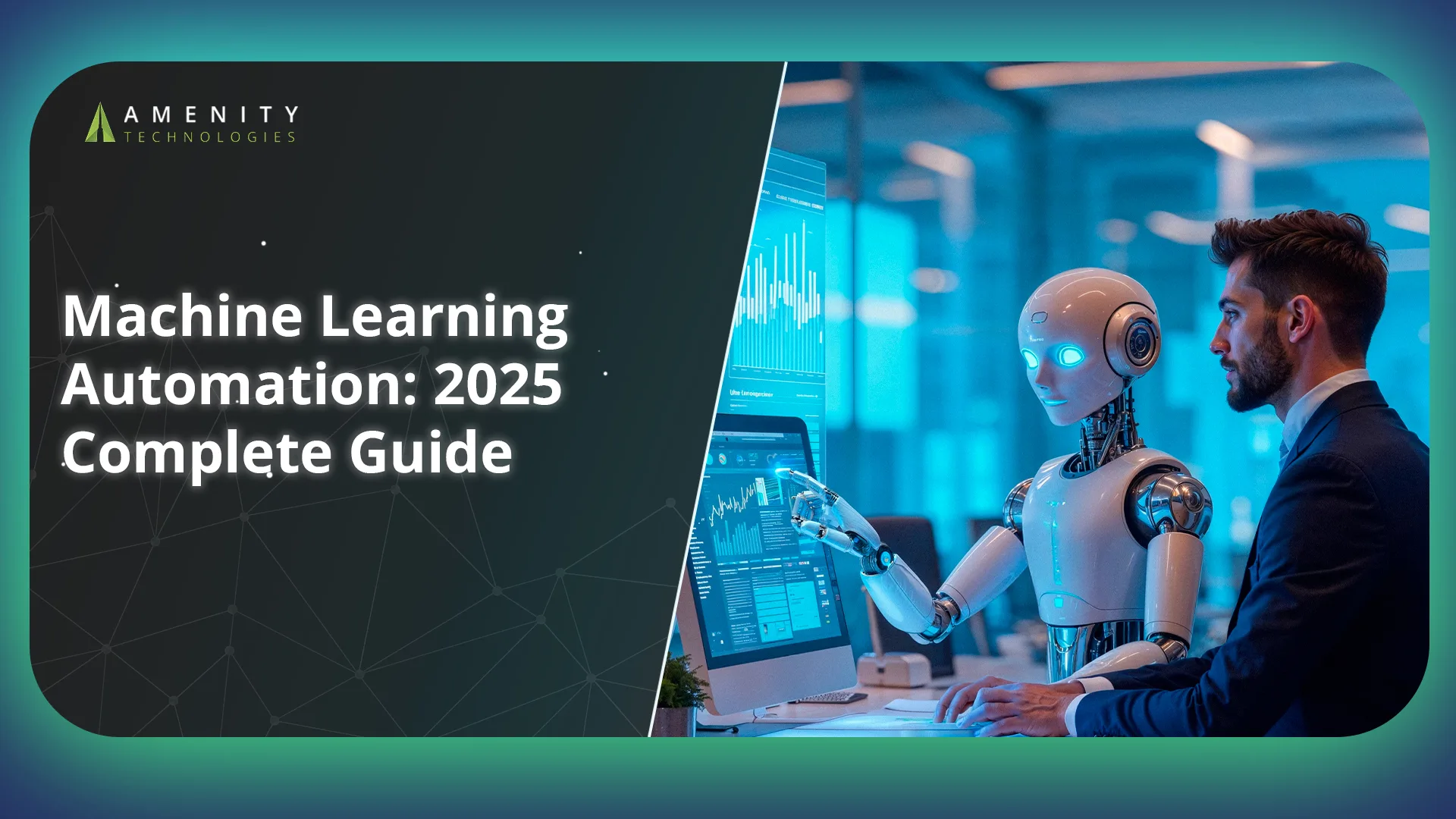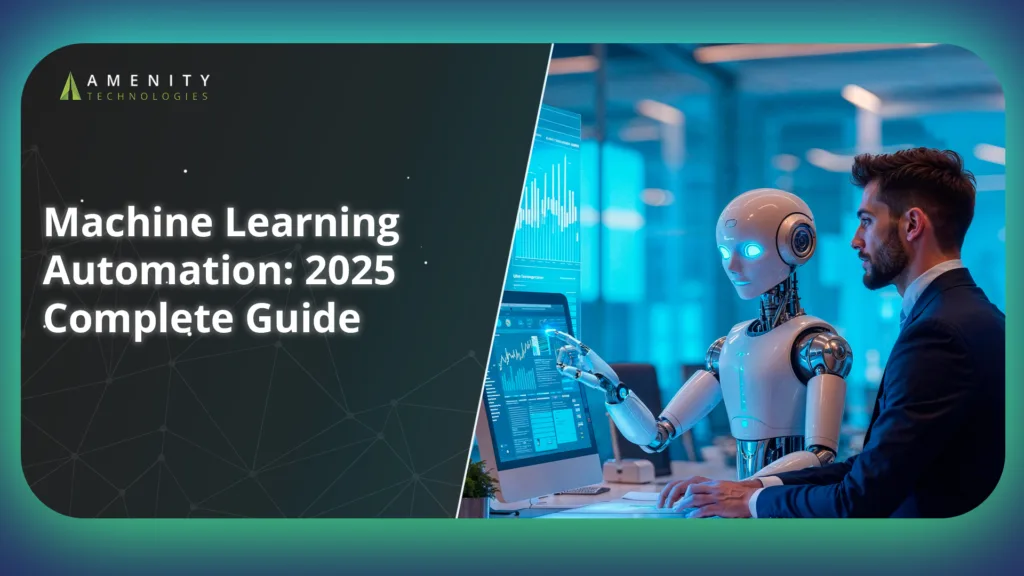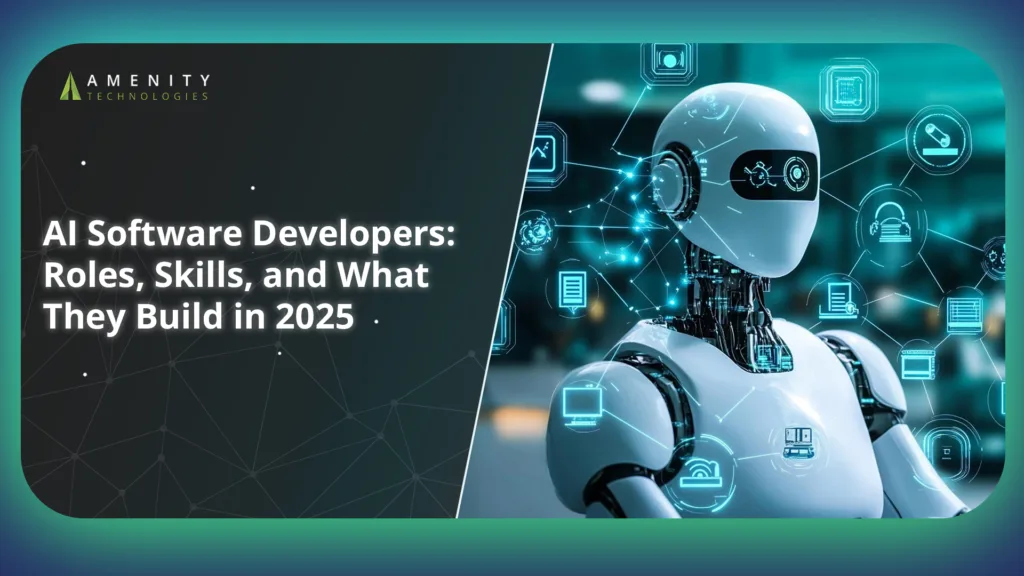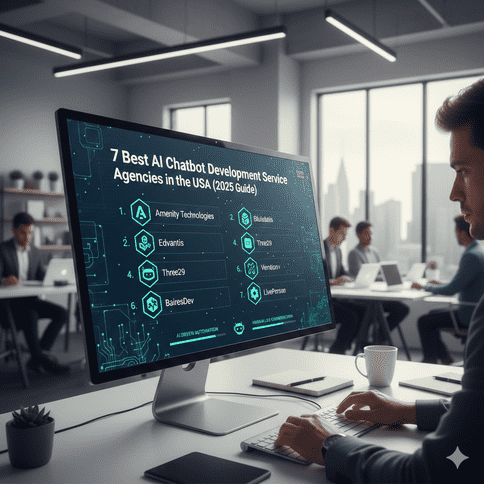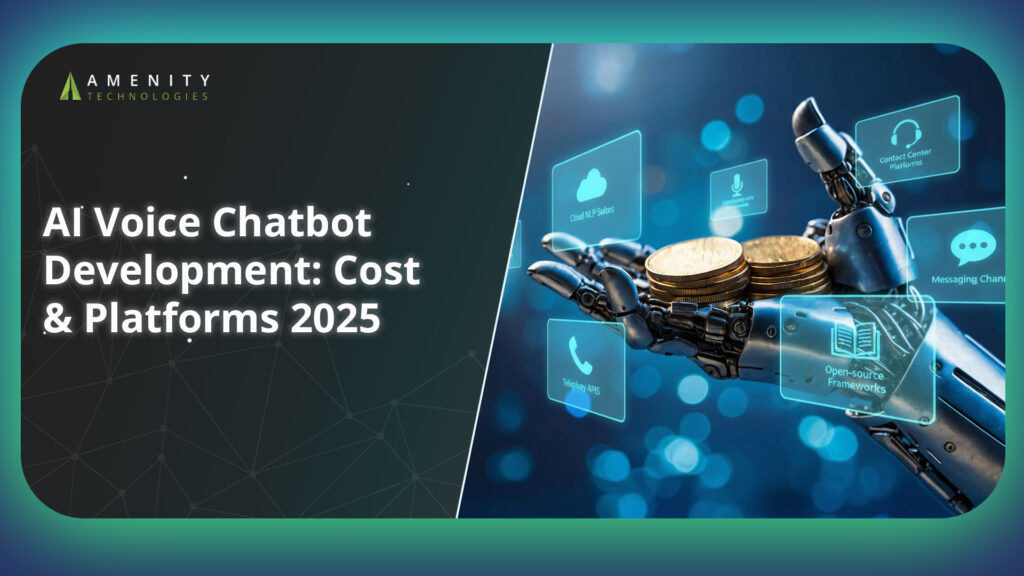Most machine learning projects never make it past experimentation. MIT estimates that 95% of generative AI pilots fail, and mostly because of brittle workflows and misaligned expectations. How many hours does your team currently spend fixing broken jobs, re-running hyperparameter tuning, or manually promoting checkpoints?
That’s the gap machine learning automation solves.
With proper machine learning orchestration, everything from data prep automation to automated model deployment runs on schedule; no heroics required. Instead of scrambling to maintain fragile workflows, teams automate machine learning across training, testing, rollout, and monitoring. The result? Faster iteration, consistent accuracy, and fewer 2 a.m. alerts.
This guide breaks down exactly how to build that efficiency layer without adding complexity.
Why Machine Learning Automation Matters in 2025?
Most teams already know how to build a model. The real challenge is keeping it running reliably without constant human involvement. Training may be the starting point, but maintenance, retraining, and rollout take far more ongoing effort than people expect.
Machine learning automation addresses that operational drag. Instead of engineers re-running scripts, reviewing drift alerts manually, or promoting checkpoints by hand, workflows run end to end under machine learning orchestration, data refresh, hyperparameter tuning, validation, deployment, and retraining included.
Before getting into the tooling, it helps to understand what problems automation solves most effectively.
1. Moving Beyond Proofs to Production Scale
A large portion of ML projects stall after the prototype stage. Not because of accuracy issues, but because teams lack the infrastructure to maintain repeatable pipelines. With automation, ingestion, feature refresh, testing, and rollout run on predefined triggers instead of manual intervention.
2. Efficiency, Repeatability And Cost Control
One-off scripts and ad-hoc tuning sessions don’t scale. Automating core steps inside an MLOps pipeline reduces unnecessary compute usage and inconsistent code paths. More importantly, it prevents silent drift caused by outdated data or stale feature sets.
3. Enabling Continuous Learning And Adaptation
Even the best model decays over time. With automate machine learning workflows in place, retraining can be event-based, triggered by performance drops or schedule-based refresh cycles. That ensures every deployed model maintains relevance without constant monitoring.
Core Components and Stages of Machine Learning Automation
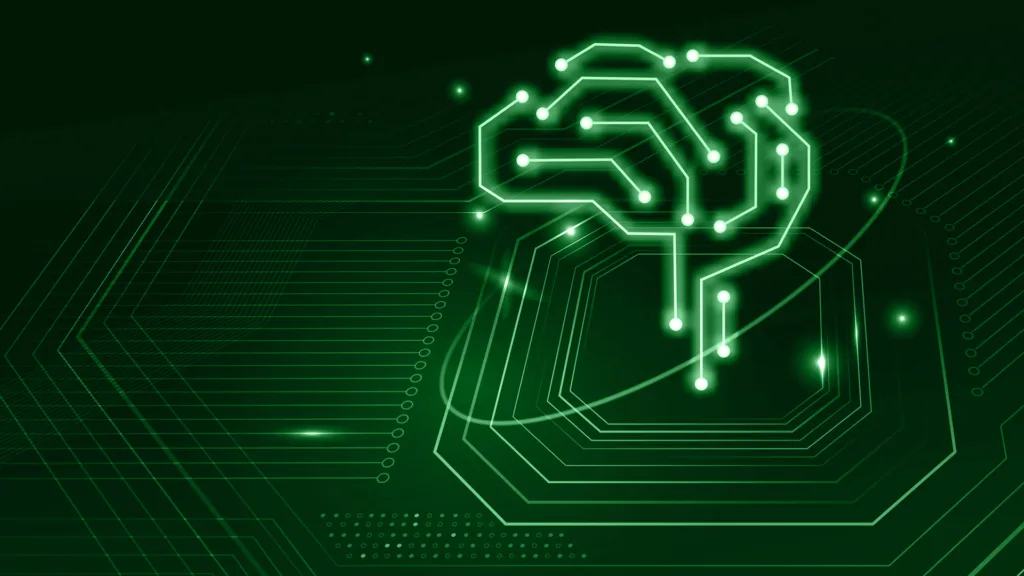
Machine learning automation is about building a self-sustaining ecosystem where data, infrastructure, and intelligence work together with minimal human intervention.
At its core, automation transforms ML from experimental prototypes into repeatable, scalable systems that deliver consistent value without constant engineering effort. Below are the key building blocks that make this transformation possible:
1. Automated Data Ingestion and Preparation
Every ML pipeline begins with data, but in manual workflows, cleaning and organizing it consumes nearly 80% of the effort. Automated ML systems streamline this bottleneck through:
- Real-time data connectors that continuously pull structured and unstructured data from databases, APIs, CRMs, sensors, or logs.
- Automated cleaning and validation to detect anomalies, missing values, duplicates, or schema errors without manual intervention.
- Feature engineering pipelines that automatically extract meaningful signals from raw inputs using pre-built transformations, embeddings, or domain rules.
When data prep becomes hands-free, teams shift focus from fixing spreadsheets to designing better intelligence.
2. Model Selection and Training at Scale
Instead of manually experimenting with dozens of models, AutoML frameworks and orchestration tools test multiple architectures, hyperparameters, and algorithms in parallel. The automation layer handles:
- Model benchmarking and scoring against predefined metrics like accuracy, precision, latency, or cost.
- Hyperparameter optimization using Bayesian search or evolutionary strategies.
- Multi-model experimentation to identify the optimal trade-off between complexity and performance.
This stage removes bias and guesswork, machines choose the best model architecture, not just the one a developer prefers.
3. Continuous Evaluation and Governance
An automated ML pipeline is useless if it silently drifts over time. That’s why monitoring becomes non-negotiable. Mature systems include:
- Drift detection to identify when input patterns or real-world conditions change.
- Performance audits against fresh ground truth, automatically triggering retraining when accuracy drops below thresholds.
- Compliance logging and traceability to satisfy regulatory, ethical, and security requirements.
Automation here ensures the model remains trusted, not just functional.
4. Seamless Deployment and Scaling
Getting a model to production is traditionally a tug-of-war between data scientists and devops teams. Automation resolves that friction by:
- Auto-deploying models as REST APIs, batch jobs, or edge endpoints with containerized infrastructure.
- Version control and rollback mechanisms, ensuring safe promotion of updated models.
- Autoscaling based on traffic, optimizing cloud cost versus performance automatically.
The result? Deployment is no longer a launch event; it becomes a living, breathing service that evolves on its own.
Trends & Tools Shaping ML Automation in 2025
Machine learning pipelines are no longer stitched together manually. Tooling across the stack, from model training to deployment and monitoring, is rapidly becoming autonomous. Below are the defining shifts accelerating this transition.
1. Rise of Foundation Models & Fine-Tuning Automation
Large pretrained models are becoming the default starting point instead of building from scratch. What’s changing now is that fine-tuning them is also being automated.
- Parameter-efficient techniques like LoRA adapters and prompt tuning reduce compute and speed up retraining.
- Layered model stacks allow organizations to maintain a base foundation model while automatically injecting domain-specific intelligence.
- Pipeline-triggered fine-tuning enables continuous updates as fresh data arrives, without requiring ML engineers to intervene.
This shifts ML from occasional retraining to continuous optimization.
2. AutoML & No-Code/Low-Code Platforms
Model development is no longer exclusive to data scientists. Enterprise teams are embedding AutoML tools directly into their workflows.
- Drag-and-drop interfaces allow non-technical users to assemble prediction pipelines.
- API-based AutoML engines plug into existing data warehouses and MLOps platforms.
- Preconfigured deployment templates skip the traditional back-and-forth between analytics and engineering teams.
The result is faster experimentation cycles and broader internal adoption.
3. Edge and On-Device Automation
Inference is moving closer to where data is generated, and automation tools are making that shift viable.
- Automated quantization and pruning reduce model size while preserving accuracy.
- Edge deployment orchestrators push updates across fleets of devices without manual packaging.
- On-device retraining triggers initiate local updates when data patterns shift.
This keeps applications resilient even in disconnected or latency-sensitive environments.
4. Agentic & Self-Supervised Automation
Models are beginning to improve themselves based on live interaction and unlabelled data.
- Self-feedback loops allow models to refine outputs when confidence scores drop.
- Synthetic data generators augment real-world datasets automatically to balance edge cases.
- Self-supervised embeddings reduce dependence on human-annotated datasets.
This creates ML systems that compound value over time rather than degrading.
5. Observability & Explainability Tooling
Automation without visibility is risky. Modern pipelines now integrate intelligence into monitoring layers; not just dashboards.
- Causal tracebacks identify performance drops down to individual data clusters or user segments.
- Automated drift notifiers trigger rollback or retraining actions before failures escalate.
- Built-in explainers generate feature attribution reports for each decision served.
Transparency is no longer optional; it’s embedded into the pipeline architecture.
Challenges & Risks in Fully Automating ML

Automation brings speed, but it also introduces new blind spots. A system that operates without checks can spiral into failure faster than a manually managed one. Below are the key risks teams must anticipate before scaling automation across the ML lifecycle.
1. Over-Automation Without Oversight
Automated pipelines can silently retrain and redeploy models even when accuracy drops. Without manual approval gates, an incorrect feature mapping or mislabeled batch can cascade through CI/CD workflows and contaminate production outputs.
2. Data and Distribution Shifts
Drift detectors must compare live inference embeddings against historical feature statistics. If KL divergence or PSI (Population Stability Index) exceeds thresholds, automation should trigger a rollback or human review, not proceed with blind retraining.
3. Infrastructure and Cost Burden
Continuous training loops can spin up GPU-heavy Kubernetes pods or TPU v4 instances without cost-awareness. Logging and monitoring pipelines ingest terabytes of telemetry, consuming S3 / GCS storage unless retention windows are enforced.
4. Tooling Fragmentation & Integration Complexity
Teams often mix TensorFlow models, PyTorch training scripts, ONNX exports, and MLflow metadata. Converting artifacts across stacks leads to version drift unless pipelines enforce containerized dependencies (Docker + Conda locking).
5. Governance, Bias, Security & Compliance
Automated decisions must include model explainers (SHAP, LIME, Integrated Gradients) before deployment in regulated sectors. Feature masking, role-based access control, and encrypted inference logs are mandatory for GDPR and SOC2 compliance.
How Amenity Technologies Can Help with Machine Learning Automation?
Automating machine learning sounds simple on paper until teams try to stitch together data pipelines, orchestration logic, feature stores, retraining triggers, and deployment scripts across different environments. Most automation efforts fail not because of model quality but because of missing pieces between steps. That’s where Amenity Technologies fills the gap.
1. Our End-to-End Automation Expertise
We build full-stack machine learning automation systems, covering ingestion, feature engineering, AutoML-based training, deployment workflows, and production monitoring.
Our teams work hands-on with Kubeflow Pipelines, MLflow, Airflow, Vertex AI, SageMaker, and custom CI/CD stacks, bridging research experiments with production-ready workflows.
2. Rapid Integration & Scaling
We don’t replace your systems; rather we connect to them. Whether your data lives in Snowflake, Databricks, S3, Postgres, or Salesforce, we integrate automation directly into your existing stack without disruption.
Depending on your maturity, we set up modular automation tiers, starting with triggered retraining and moving toward fully orchestrated pipelines when your team is ready to hand off more control.
3. Risk Mitigation & Governance Built In
Automating machine learning should never mean letting models run unchecked. Our experts embeds bias audits, drift flags, rollback logic, and approval checkpoints at every layer.
Every model update is logged with lineage tracking, explainability metadata, and compliance marks, helping industries under HIPAA, PCI-DSS, ISO 27001, or FINRA maintain audit readiness without slowing progress.
4. Domain-Specific Automation Solutions
No automation framework fits all industries. A fraud detection model in fintech behaves differently from predictive maintenance in IoT or recommendation systems in retail.
We design pipelines aligned with latency requirements, regulatory limits, and deployment constraints, whether that means running inference on GPUs in cloud clusters, ARM devices at the edge, or hybrid deployment to on-prem infrastructure.
Conclusion
Machine learning automation is becoming standard practice for teams that want more than experimental models. The real value comes from stitching data prep, model orchestration, deployment, and monitoring into one continuous loop that runs reliably without manual nudging. Done well, it reduces engineering fatigue, improves accuracy stability, and allows products to adapt as user behavior shifts.
The catch? Automation without proper guardrails can turn into hidden technical debt. That’s why structured workflows, pipeline orchestration, version control, and human approval gates are essential. If you want to move toward automated machine learning without risking control, Amenity Technologies can help you build the right framework — not just fast, but responsibly.
FAQs
Q1: What is machine learning automation?
It refers to using systems that handle data preparation, training pipeline automation, deployment, and monitoring without constant engineer involvement.
Q2: Can non-developers automate ML workflows?
Yes. No-code ML and AutoML tools let analysts and product teams train basic models, provided guardrails and approval checks are in place.
Q3: How often should models retrain in automated pipelines?
It depends on data velocity. Event-based retraining triggered by drift detection is preferred over fixed schedules.
Q4: What’s the difference between AutoML and full automation?
AutoML focuses on hyperparameter tuning and model search, while full automation controls the entire ML workflow orchestration, including deployment and governance.
Q5: How do automated systems avoid performance drops?
By enforcing feature stability checks, shadow deployments, fallback models, and model monitoring before updates go live.
Q6: Who benefits most from machine learning automation?
Teams running repetitive prediction tasks, fintech risk scoring, retail recommendations, IoT forecasting, or healthcare diagnostics, gain the highest return on automation.


